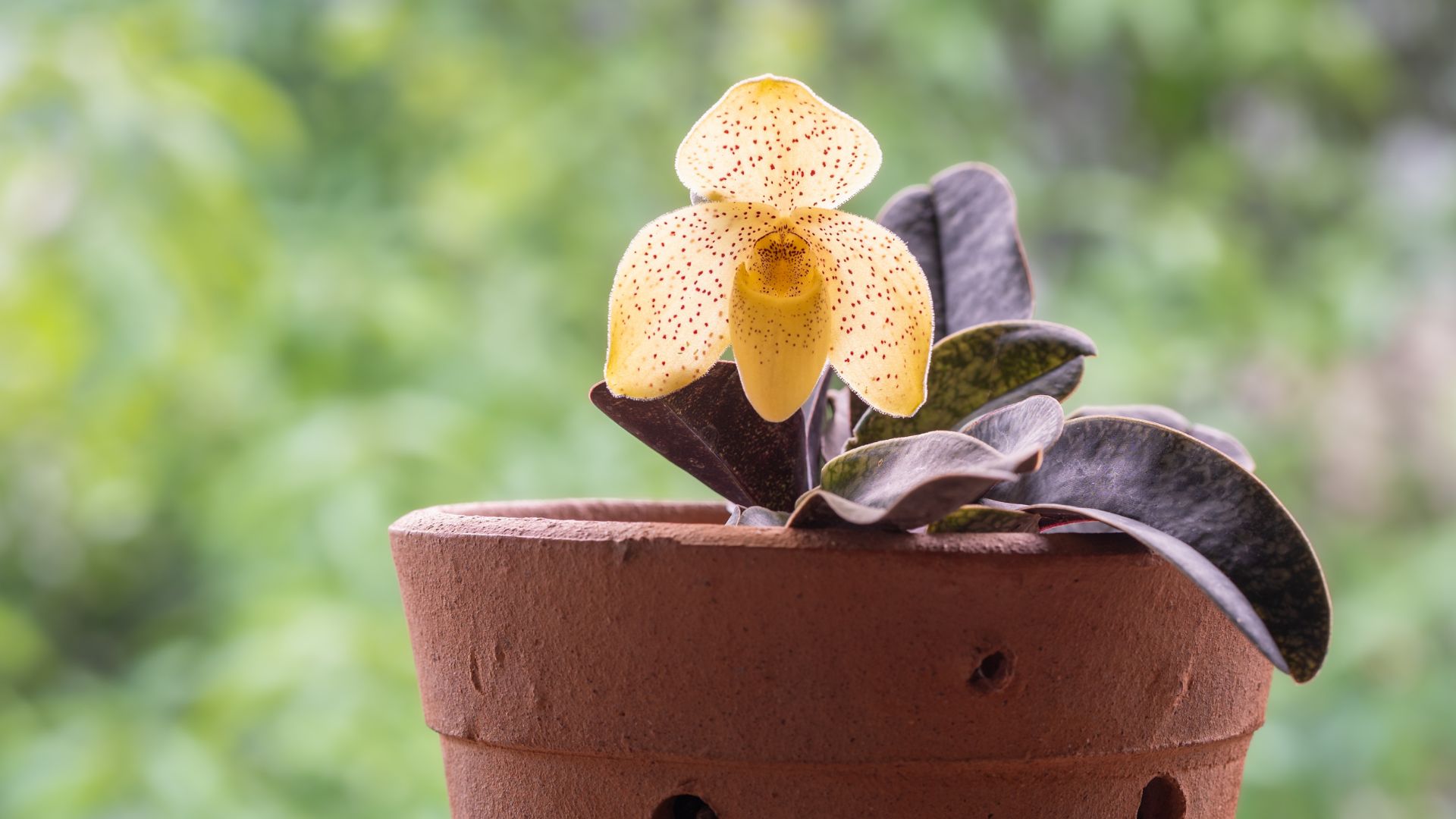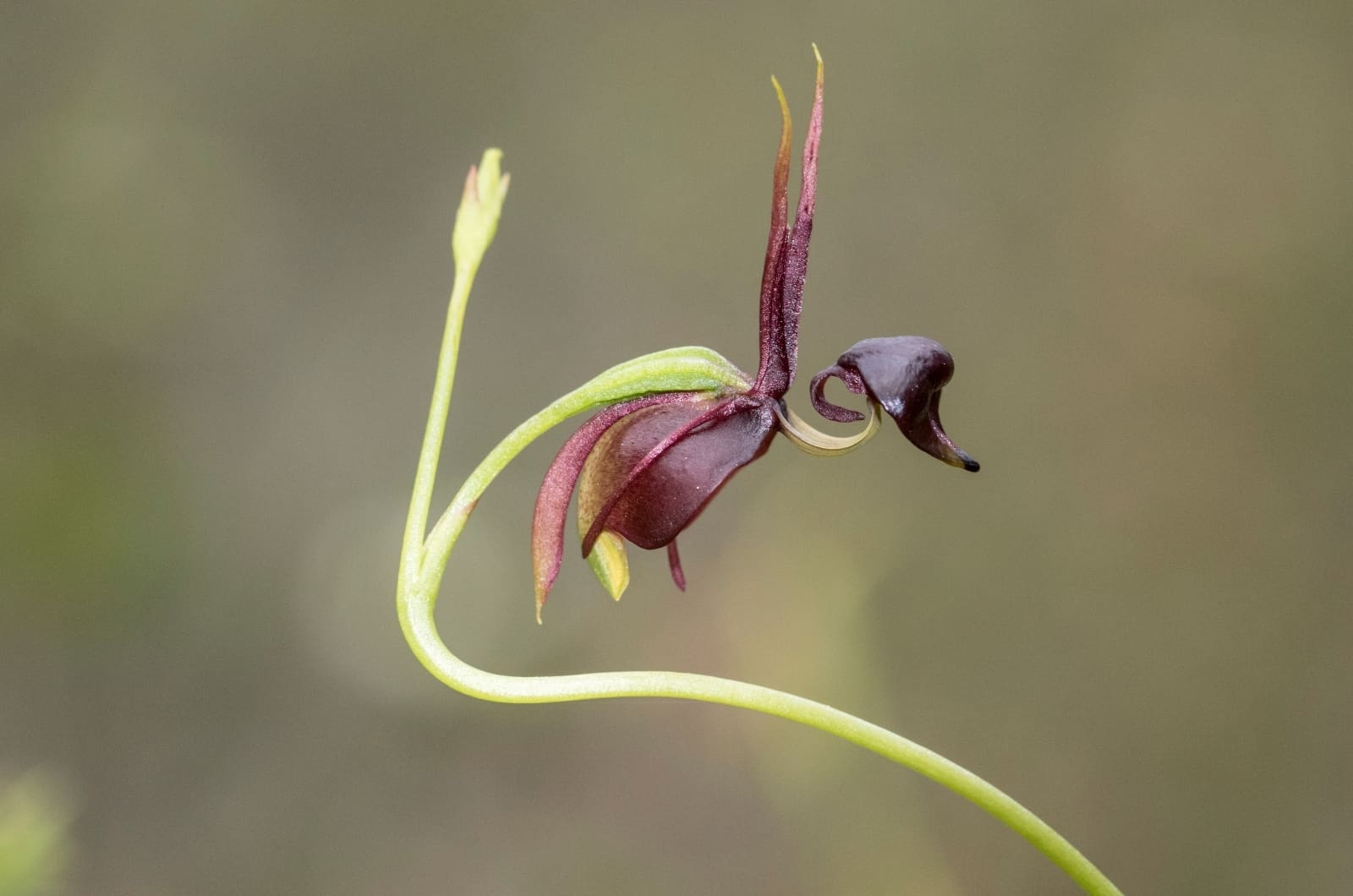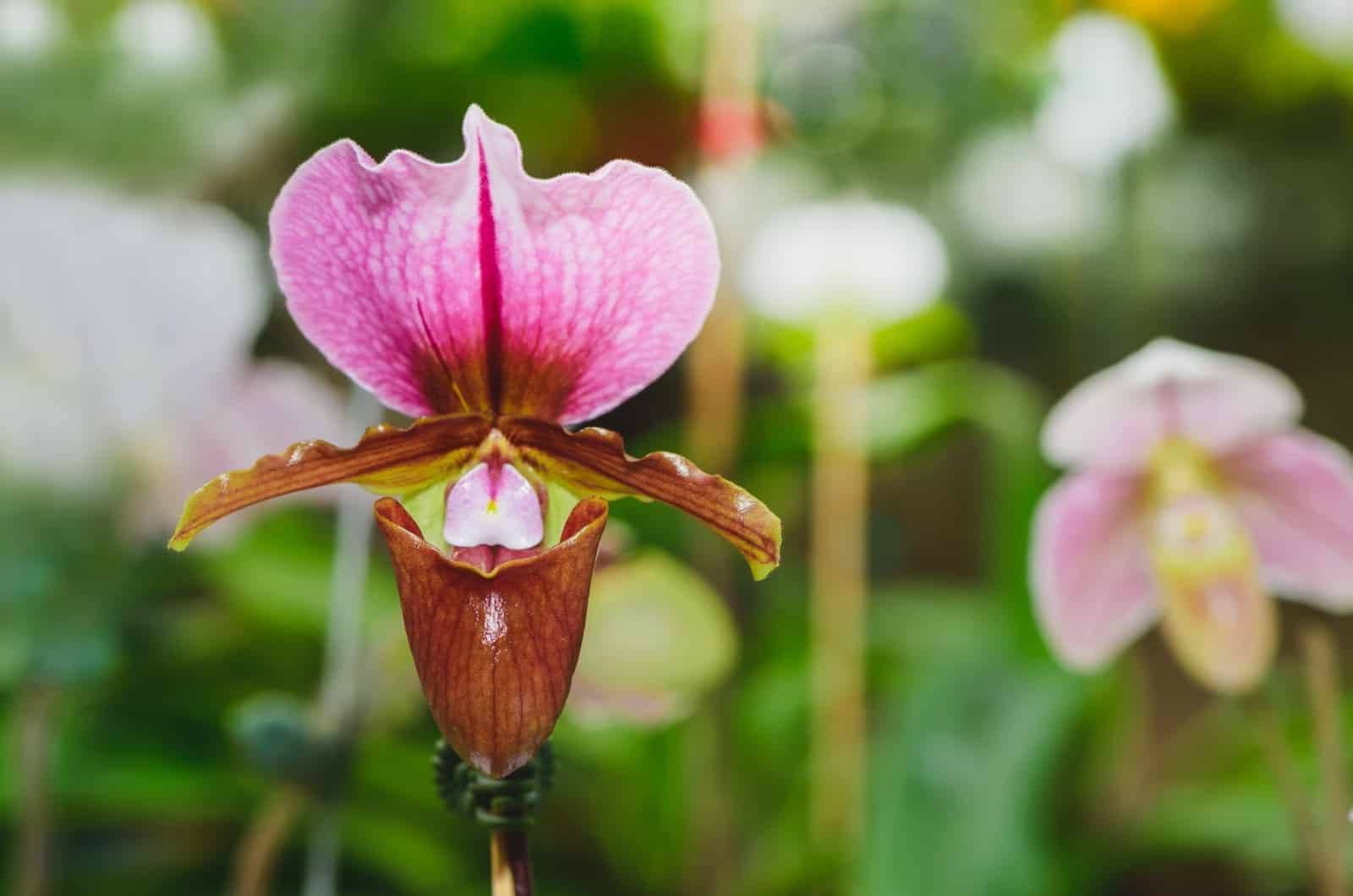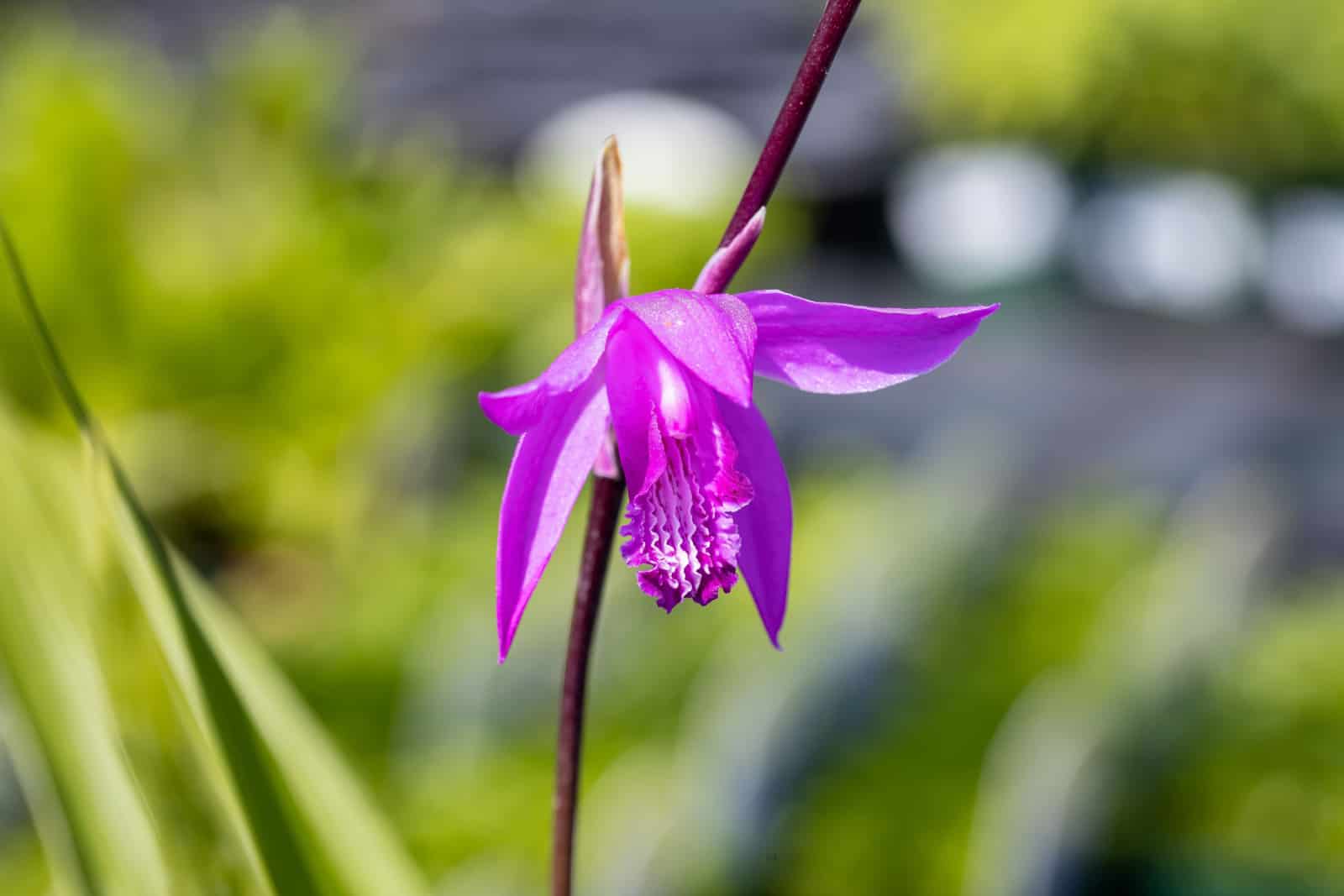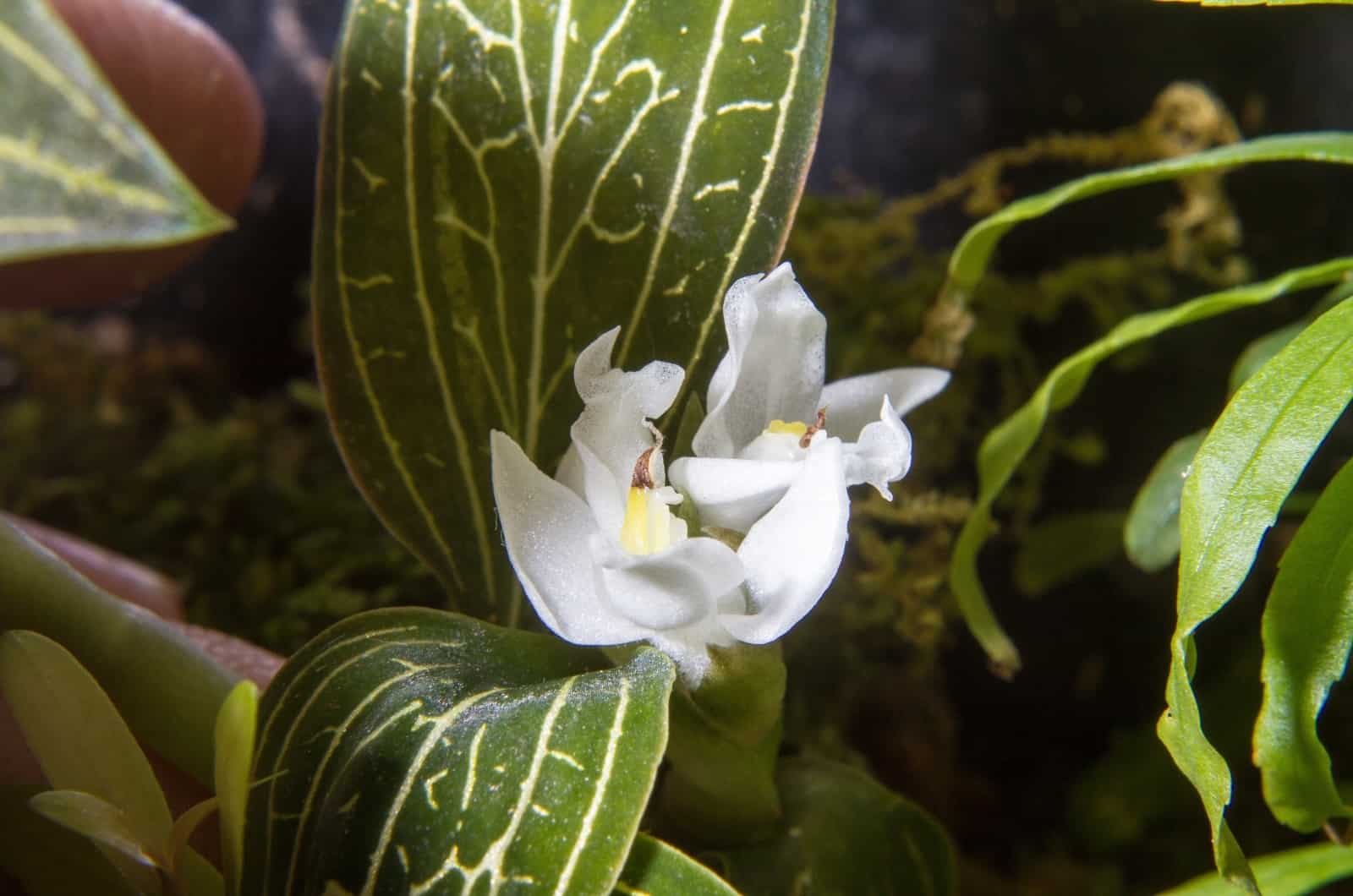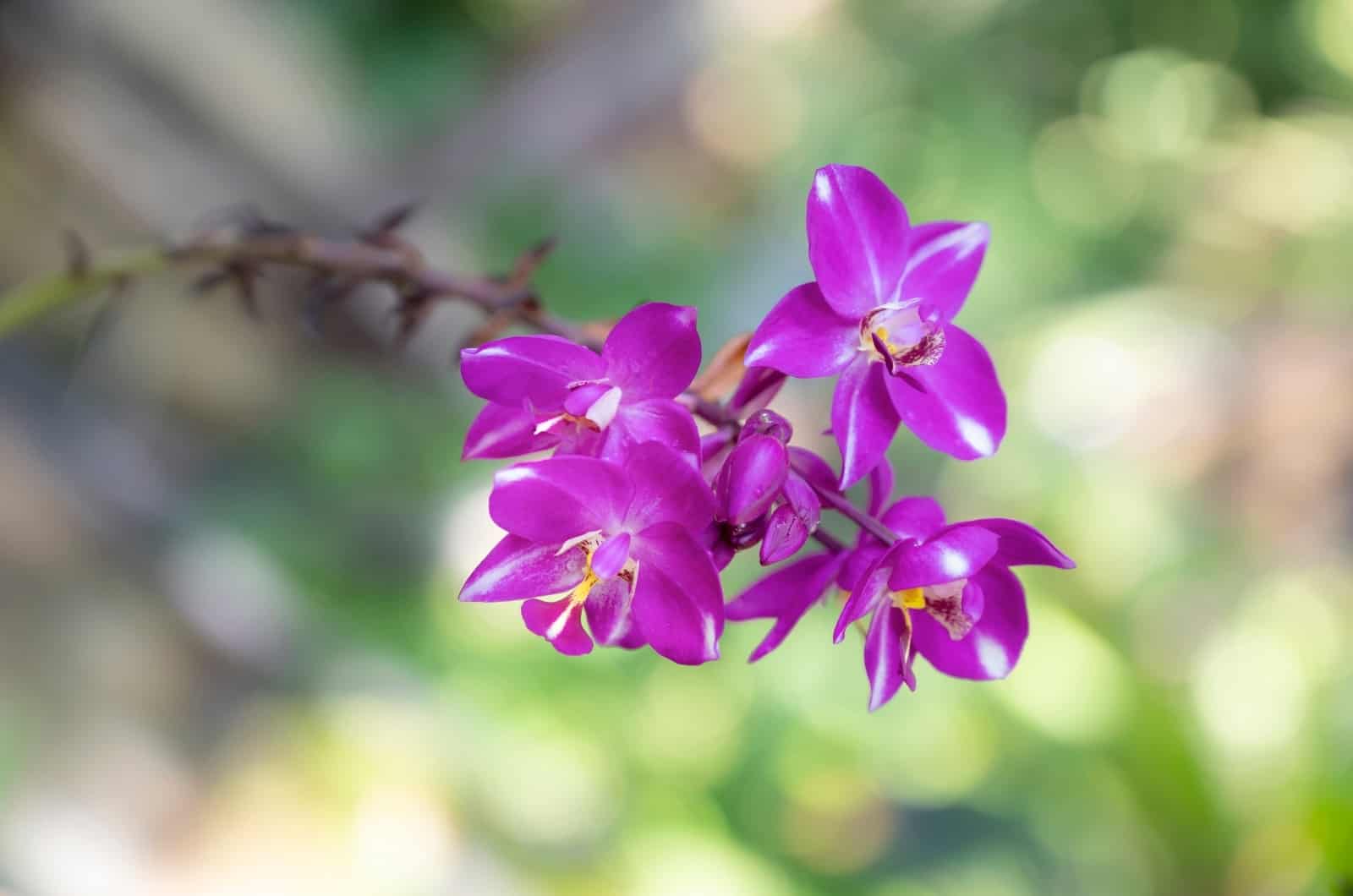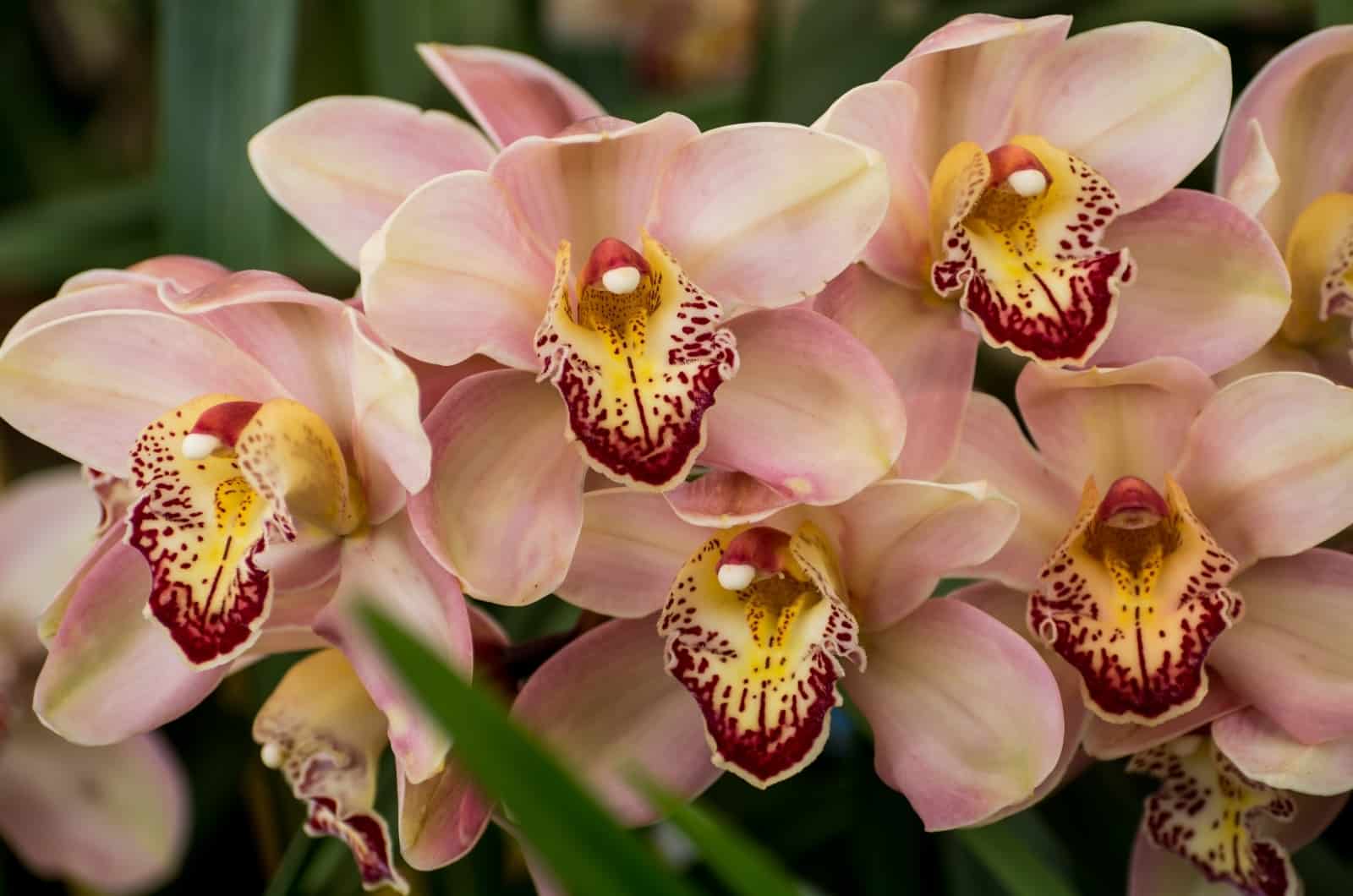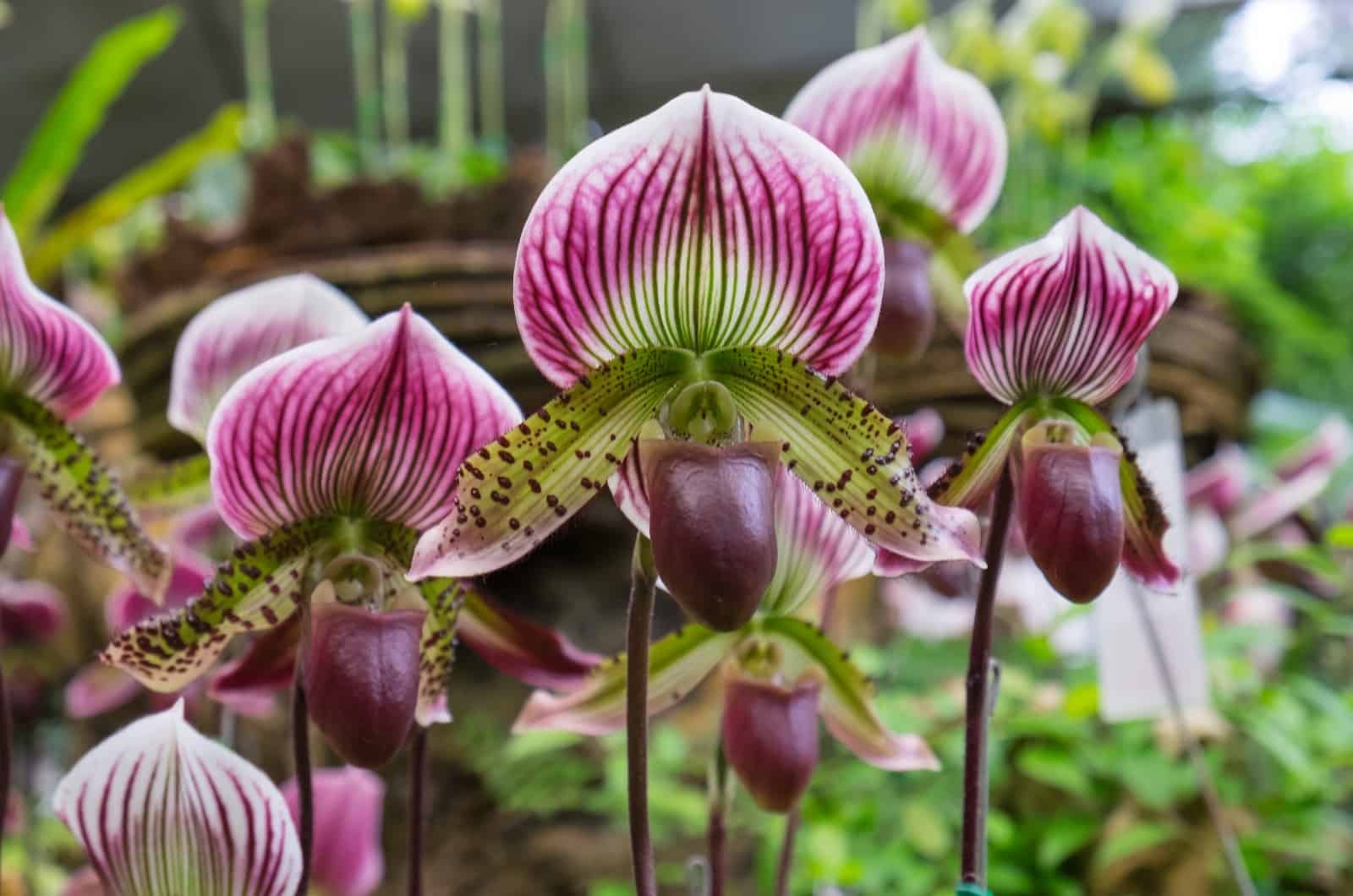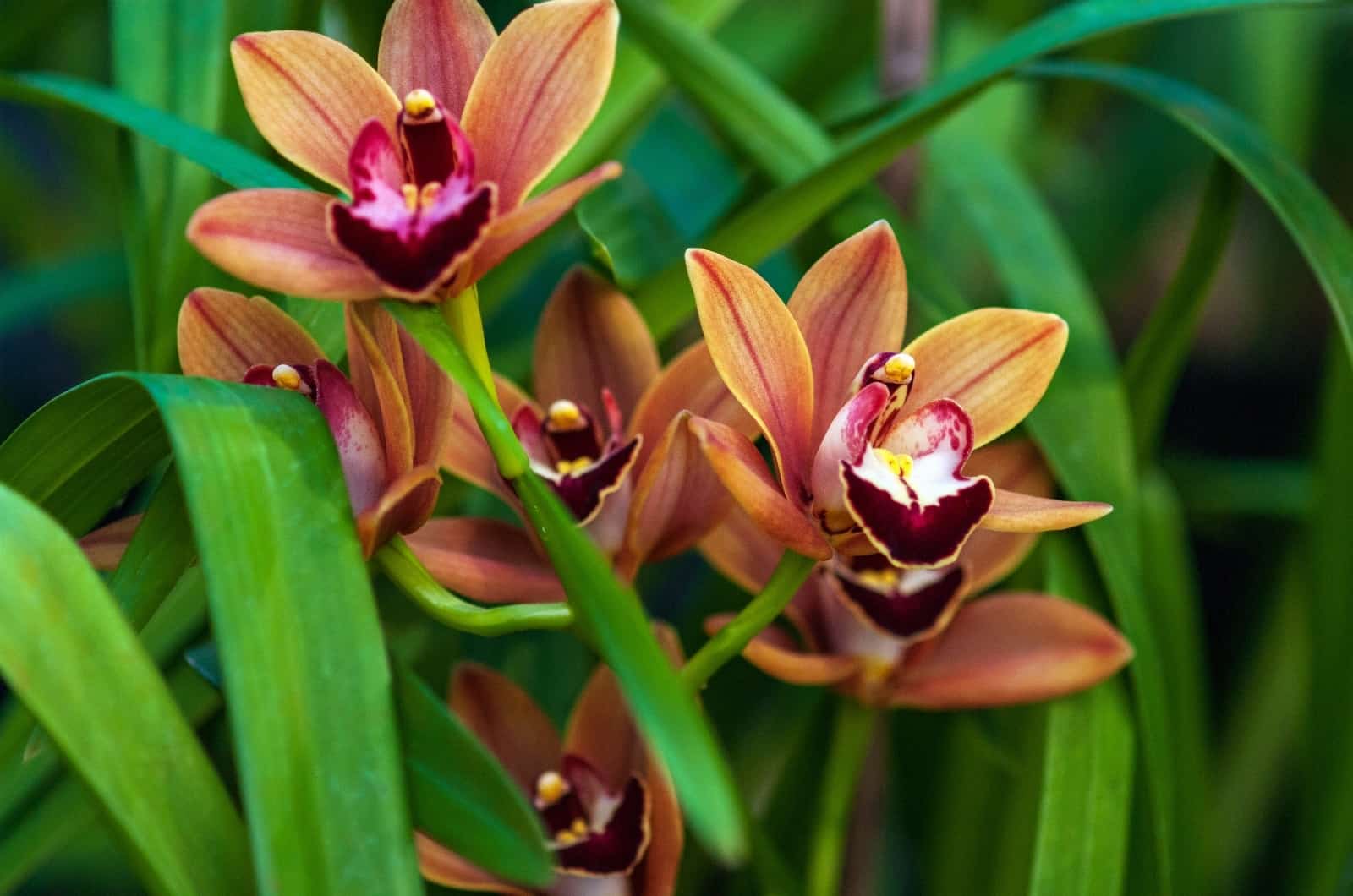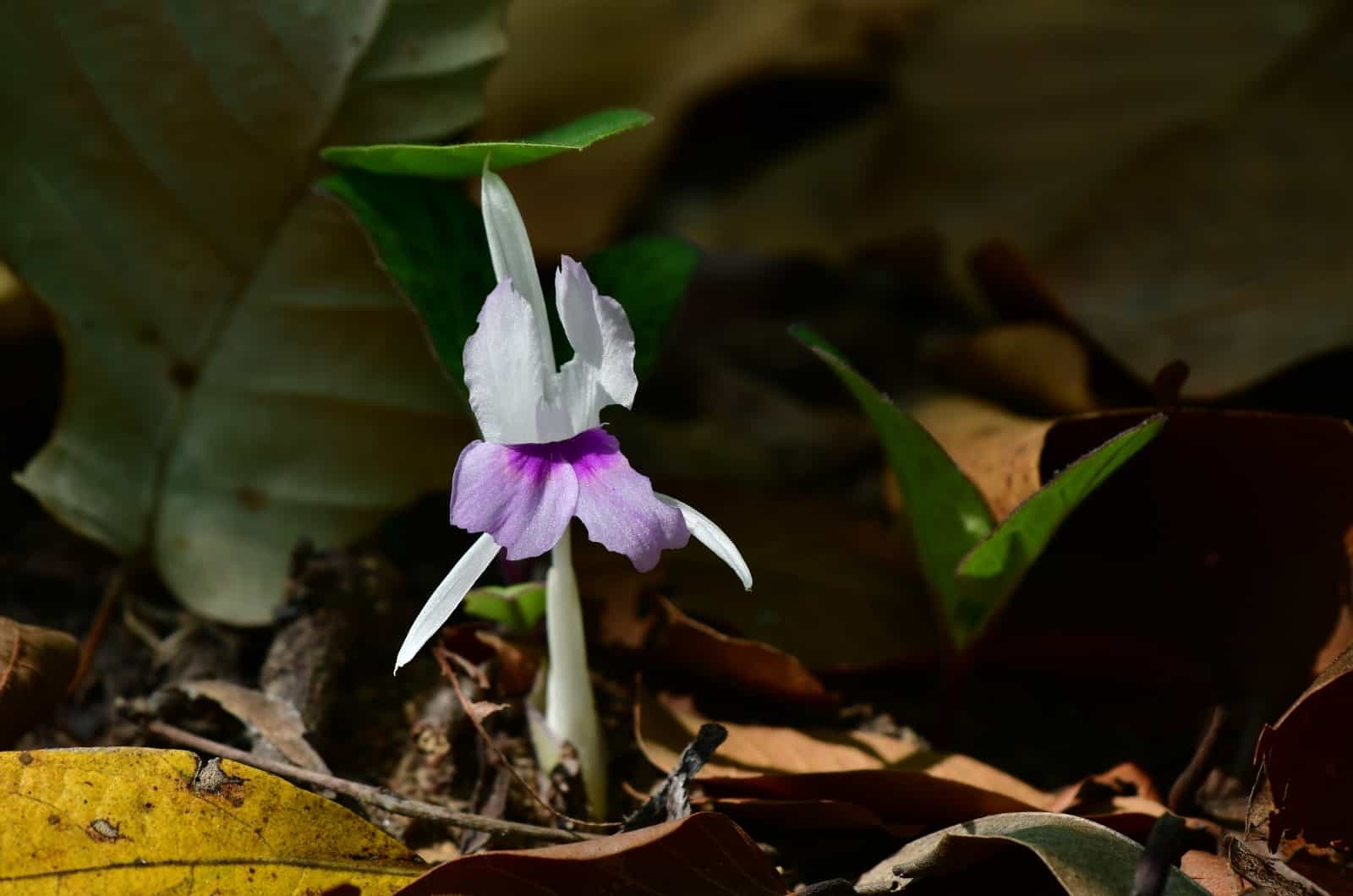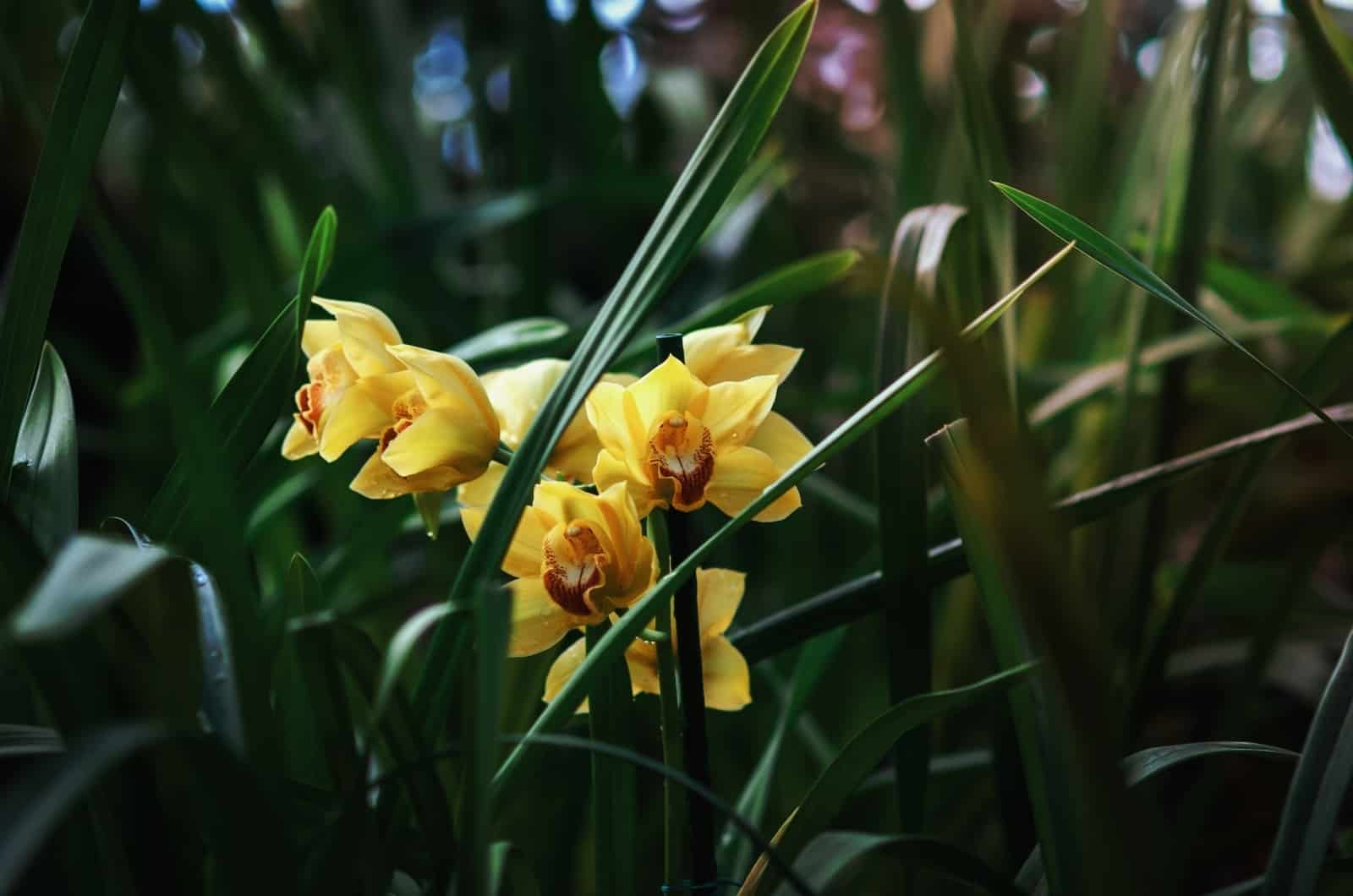Whenever I mention orchids to my fellow plant growers, the second thing they say is how hard it is to maintain these plants. Of course, the first thing is about the unique and beautiful appearance of these fantastic plants.
Orchids may be picky about growing conditions, but what if I told you that there are some hardy and easy-to-maintain orchid species?
Terrestrial orchid plants have a different growth habit from the more popular epiphytic species. They’re commonly referred to as hardy or ground orchids.
In this article, I’m going to tell you more about terrestrial orchids, the most common species, and some tips for growing them.
Let’s get started!
What Are Terrestrial Orchid Species?
The first thing to understand is the difference between terrestrial and epiphytic orchids.
Epiphytic species actually depend on other plant species; they don’t develop their root system under the soil, but rather use the surface of other plants to survive.
You’ll often come across the term “air plants”, which refers to the way epiphytic species develop.
Unlike most plants, which acquire their food from the ground through their roots, epiphytic orchids get theirs from rainfall, air, and even decomposing debris.
Therefore, these species don’t take up nutrients from host plants, but rather from the surrounding environment.
Terrestrial orchids, on the other hand, form their root systems in the ground, which is why they’re often referred to as ground orchids. Unlike epiphytic orchids, terrestrial species take up water and nutrients from the soil.
They typically have lower care requirements and are often called hardy orchids. Keep reading to learn the orchid plant care guide.
Regarding their appearance, terrestrial orchids come in different sizes and colors, making these plants perfect for every home garden.
Let’s look at some of the best terrestrial orchid species.
Lady Slipper Orchids
The name “Lady slipper orchid” refers to plant species and cultivars from the Cypripedium genus.
These plants are found throughout North America and some parts of Europe. Interestingly, they have two leaves that develop from the main part of the plant. You will also notice that the plant produces the flower stalk from the center.
The one-of-a-kind blossom resembles a lady’s slipper with a little aperture at the front. The color of the blossoms range from white and yellow to dark pink and almost purple.
There are numerous variants, some of which are close to extinction, but the majority of species are now widely grown and available from respectable nurseries and garden retailers.
Here are some of the most popular Lady slipper species:
1. Cypripedium acaule: This orchid develops pink blossoms, which is why it’s often referred to as the Pink Lady slipper. You’ll also come upon the nickname “Mocassin flower”. The blossoms don’t produce nectar, so many blossoms remain unpollinated and fail to generate seeds.
2. Cypripediump parviflorum: This species is commonly known as the Yellow Lady slipper orchid. There are many cultivars of these orchids, all with big blossoms that come in bright to deep yellow.
3. Cypripedium reginae: Known as the Showy Lady slipper, this species develops white blossoms and pink to magenta pouches. Believe it or not, this plant takes about 16 years to produce its first blossoms.
Chinese Ground Orchids
This is another type of hardy orchid, and as you might assume, this plant is found in China as well as Japan and Korea.
This species develops light green, arrow-shaped leaves at the beginning of spring.
As the summer approaches, you’ll notice flower spikes that will produce blossoms around the leathery leaves.
Each spike typically generates three to five blossoms that come in purplish-pink or white.
These orchids are pretty easy to maintain and perfect for container gardening, but they look fantastic when planted as border plants or in flower beds.
Interestingly, Bletilla striata plants can be successfully cultivated indoors, but only if given the right amount of light.
The blossoms are simple to harvest; just pluck them from amid the leaves and put the flowers in a vase. The great thing is that the cut flowers of this hardy orchid last for a long time in a vase.
Jewel Orchid
While most orchids are admired and cultivated for their breathtaking blossoms, the Jewel orchid (Ludisia discolor) is renowned for its fantastic velvety leaves.
They may have delicate spikes of white blossoms, but they are somewhat modest in comparison to their beautiful foliage.
Jewel orchids are commonly cultivated as indoor plants, but also frequently used in terrariums due to their preference for higher moisture
The only disadvantage is that they can be difficult to find, so keep your eyes peeled at plant stores and garden exhibitions.
The Black jewel orchid and Ludisia discolor alba are the only species of Ludisia orchids.
The first one produces dark green to almost black foliage with delicate white stripes. At specific light levels, the maroon hue on the undersides of the leaves comes through and turns the white stripes into a crimson color.
The Alba species is pretty rare, but has many devotees and is one of the most common targets of plant hunters. The foliage is green and has silver veinings that cover a lot of the leaf surface.
Spathoglottis Orchids
Spathoglottis orchid species are the most common terrestrial orchids grown in home gardens. If you are a beginner grower and want to start an orchid garden, then Sphatoglottis orchids are a perfect choice.
They are distinguished by their huge, beautiful blossoms, which come in a wide range of hues and sizes.
Spathoglottis orchids are native to tropical regions, which means they won’t tolerate frost. Some of them are suitable for container gardening.
Spathoglottis plicata is the most common variety, and it grows along roadsides in tropical climates and has beautiful purple or white blossoms.
Another lovely variety of Spathoglottis orchids is the pubescens species; a yellow-flowered plant native to Southeast Asia, though it is commonly cultivated worldwide.
Cymbidium orchids
Cymbidium orchids are an excellent species to cultivate in temperate regions. Growers keep these orchids outdoors until the first frost.
The natural flowering season of Cymbidium orchids is throughout the winter, which is an amazing feature for growers that keep these plants indoors. Remember, most plants sleep during winter and don’t produce blossoms or new growth.
A combination of dropping temperatures and decreased water supply promotes flower production.
The Phoenix orchid, scientifically known as Cymbidium dayanum, produces white blooms with lovely burgundy stripes.
The Cymbidium erythrostylum is another species of terrestrial orchid, and produces white blossoms with a crimson core.
Paphiopedilum
This is a genus of long-blooming orchids. The first blossoms occur in fall and last until spring.
The majority of species have one blossom per spike, however, some species have numerous flowers on a single stalk.
Size, hues, and features vary from species to species.
How To Grow Terrestrial Orchids
Now that we know some types of ground orchids, it’s time to learn their care requirements.
Light Requirements
These plants prefer a well-lit location when grown in temperate climates, and a somewhat shaded one in warmer climates.
When choosing the planting site, make sure your orchids will receive enough light; for instance, taller trees with dense foliage will filter the sun and protect your orchids from sunburns.
Of course, it’s easier to ensure a suitable light level if you grow these orchids in pots. If the plants are exposed to direct sunlight, simply move them to a shadier location and vice versa.
Watering
The watering frequency and amount of water for terrestrial orchids depends on the species you grow.
If you cultivate species with shallow root systems, you’ll need to irrigate more often. If you cultivate orchids with pseudobulbs, there’s no need to water as often, as these species can hold moisture for a good period of time.
If unsure which species you actually have, there’s one simple rule that applies to all orchid species; once the top few inches of the growing medium dry out, it’s time for irrigation!
Remember that most orchids require extra water throughout the growing and blooming season, and less water during the winter months.
For potted orchids, make sure the container has drainage holes to prevent root rot, which is one of the most common causes of a dying orchid.
Temperature Requirements
Some orchids can withstand freezing conditions, whereas others cannot. If you wish to grow them in a perennial garden, you should know what climate you live in. Therefore, select an orchid that is appropriate for your climate.
For instance, Cymbidium orchids produce blossoms when temperatures are lower. On the other hand, Spathoglottis orchids can’t withstand low temperatures.
If unsure about the temperature tolerance of your orchid, grow it in a container and keep it inside during the colder months.
Perfect Soil Type
I have to mention that these types of orchids don’t develop aerial roots, unlike their epiphytic relatives.
Due to this root system, potting these species is not a hard task. If you decide to cultivate your terrestrial orchid in containers, make sure there are plenty of drainage holes in the bottom to prevent water accumulation in the growing substrate. Remember that root rot may be the reason why your orchid isn’t flowering.
There are potting mixes on the market made specifically for orchids in containers.
If you are planting your orchids in the ground, leave the crown above the soil surface to avoid rot.
Mix compost in the soil before planting your orchids in a flower bed to ensure nutrients and promote growth.
Fertilizing Schedule
If you grow epiphytic orchid species, you already know how demanding they can be regarding feeding.
This is what makes terrestrial species great; regular feeding isn’t necessary for these plants to thrive.
You can apply orchid fertilizer diluted to ¼ strength before the flowering season.
How To Propagate Hardy Terrestrial Orchids
The best way to propagate a terrestrial orchid is by division. You need to dig out the clump and loosen the soil.
Divide the clump into sections; most of the sections will have new shoots, but don’t throw away the ones without new shoots because they’ll most likely develop after planting.
Remove the old shoots from each section and plant them in the ground or in a container. Make a hole no deeper than two inches and put each section in the hole. Water well, and that’s it!
Here’s a video on dividing and propagating the Bletilla striata terrestrial orchid:
Wrapping Up
Orchids are undoubtedly one of the prettiest plants in the world. The only drawback is that they can be fussy about growing conditions.
If you are a beginner grower or had issues with the cultivation of epiphytic orchids, the perfect solution is to grow a terrestrial orchid species.
These orchids tolerate a wide range of conditions, which earned them the nickname “hardy orchids”.
You’ve seen some of the most common terrestrial orchids, as well as care instructions for these plants.
Now there’s no reason not to add these orchids to your flower bed or enrich your indoor plant collection by potting these plants.
Good luck and until next time!

